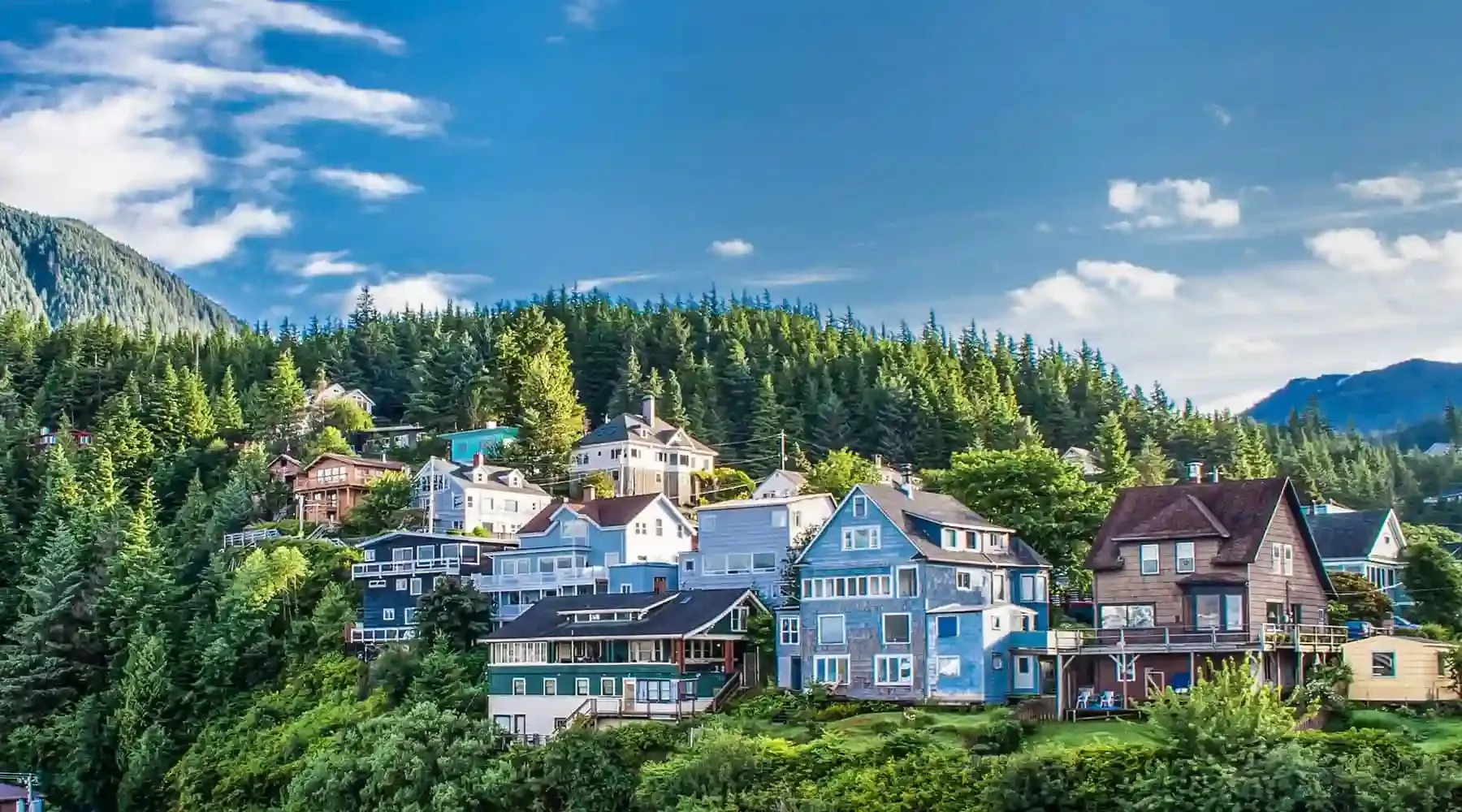Alaska, the land of majestic mountains, magnificent glaciers, and distinctive indigenous cultures, attracts visitors not only with its pristine natural beauty but also with its unique residential architecture. Among these, traditional log houses play a vital role, reflecting the history, culture, and remarkable adaptability of the people to the harsh environment. This article will take you on a journey to discover the valuable experiences in building traditional log houses in Alaska, a path connecting unique construction techniques with deep cultural identity.
Exploring the History and Culture of Traditional Alaskan Log Houses
Traditional Alaskan log houses are not merely dwellings but also cultural symbols, embodying spiritual values and skills passed down through generations. For indigenous communities such as the Tlingit, Haida, and Yupik people, log houses hold profound significance related to family, community, and their connection with nature.
From ancient times, wood became the primary building material due to the abundance of Alaskan primeval forests. Timber species like red cedar, spruce, and hemlock are not only durable but also resistant to harsh weather, particularly suitable for Alaska’s cold and humid climate. Traditional log house construction techniques were developed based on experience and a deep understanding of the natural environment, maximizing the use of available resources and adapting to the specific climatic conditions.

Traditional Alaskan log houses are not just architecture; they are an inseparable part of indigenous culture. Every detail, from wood selection and carving techniques to spatial layout, is deeply imbued with cultural and spiritual beliefs. Totem poles, often placed in front of houses or integrated into the architecture, are not only works of art but also tell stories of family history, legends, and the connection between humans and the natural world.
Materials and Techniques for Building Traditional Alaskan Log Houses
Building traditional log houses in Alaska requires a deep understanding of materials and woodworking techniques. Red cedar is often the preferred choice due to its natural decay resistance, high durability, and aesthetic appeal. Spruce and hemlock are also popular options, depending on the intended use and local conditions.
Traditional Alaskan log house construction techniques emphasize sturdiness and insulation. Walls are typically built by joining thick, tightly fitted logs, creating a solid protective shell against cold winds and snowfall. The sloping roof helps water and snow to slide off easily, preventing accumulation that could pressure the structure.
One of the unique techniques of traditional Alaskan log houses is the use of complex wooden joints, minimizing the use of nails or metal materials. These joints not only enhance aesthetics but also make the house more flexible, able to withstand ground movement due to frost and earthquakes. Exquisite wood carving techniques are also an indispensable part, showcasing the craftsmanship of the builders and traditional cultural values.
Experiences in Adapting Traditional Log Houses to the Alaskan Climate
Alaska’s harsh climate, with long winters, low temperatures, and heavy snowfall, poses significant challenges for housing construction. Traditional Alaskan log houses have demonstrated remarkable adaptability to this environment through centuries of accumulated building experience.
Natural Insulation: Wood is a natural insulator, helping to keep the house warm in winter and cool in summer. Thick log walls and tight-fitting techniques create an effective insulation layer, minimizing heat loss and saving energy.
Sloping Roof Design: The sloping roof is a characteristic feature of traditional Alaskan log houses, allowing snow to slide off easily, preventing excessive snow accumulation that could collapse the roof. The roof slope is carefully calculated to suit the average annual snowfall of each region.
Solid Foundation: Due to Alaska’s diverse terrain and frequent frost heaves, building a solid foundation is crucial. Traditional log houses are often built on stone foundations or wooden piles, raising the house above the ground, preventing moisture and direct frost impact on the floor.
Use of Local Materials: Prioritizing the use of wood and natural materials available locally not only reduces transportation costs but also ensures the sustainability and adaptability of the house to the surrounding environment.
Traditional Alaskan Log Houses in Modern Life
Today, traditional Alaskan log houses still maintain an important position in residential architecture in this region. Alongside preserved ancient log houses, many modern constructions inherit and promote traditional architectural values, combined with modern amenities and advanced building technologies.
The trend of building eco-friendly, environmentally conscious log houses is increasingly popular in Alaska. Wood is a renewable material with carbon absorption capacity, contributing to minimizing negative environmental impacts. Modern log houses are often designed to optimize natural light, ventilation, and the use of renewable energy, creating living spaces in harmony with nature and energy-efficient.

The experience of building traditional log houses in Alaska is not just a lesson in construction techniques but also a source of inspiration regarding creativity, adaptability, and the deep connection between humans and nature. These sturdy, warm log houses are not only shelters from the elements but also cultural symbols, a precious heritage to be cherished and promoted in modern life.
Conclusion
The journey of exploring the experience of building traditional log houses in Alaska is a journey of understanding the harmonious combination of architecture, culture, and nature. These log houses are not only a testament to the skilled construction techniques of the Alaskan people but also a symbol of resilience, adaptability, and deep love for this land. When admiring traditional log houses, we not only see unique architectural beauty but also feel the cultural soul and profound human values hidden within.